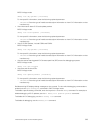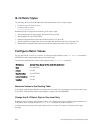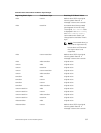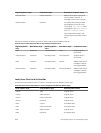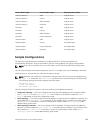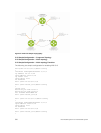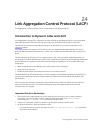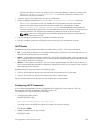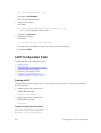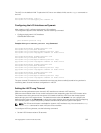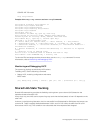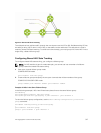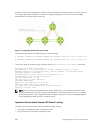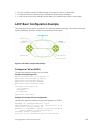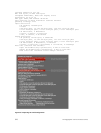
– If a physical interface is a part of a dynamic LAG, it cannot be added as a member of a static LAG.
The channel-member tengigabitethernet x/y command is rejected in the static LAG
interface for that physical interface.
• A dynamic LAG can be created with any type of configuration.
• There is a difference between the shutdown and no interface port-channel commands:
– The shutdown command on LAG “xyz” disables the LAG and retains the user commands.
However, the system does not allow the channel number “xyz” to be statically created.
– The no interface port-channel channel-number command deletes the specified LAG,
including a dynamically created LAG. This command removes all LACP-specific commands on the
member interfaces. The interfaces are restored to a state that is ready to be configured.
NOTE: There is no configuration on the interface because that condition is required for an
interface to be part of a LAG.
• You can configure link dampening on individual members of a LAG.
• You can configure a maximum of 128 port-channels with up to 16 members per channel.
LACP Modes
Dell Networking OS provides three modes for configuration of LACP — Off, Active, and Passive.
• Off — In this state, an interface is not capable of being part of a dynamic LAG. LACP does not run on
any port that is configured to be in this state.
• Active — In this state, the interface is said to be in the “active negotiating state.” LACP runs on any link
that is configured to be in this state. A port in Active state also automatically initiates negotiations with
other ports by initiating LACP packets.
• Passive — In this state, the interface is not in an active negotiating state, but LACP runs on the link. A
port in Passive state also responds to negotiation requests (from ports in Active state). Ports in Passive
state respond to LACP packets.
Dell Networking OS supports LAGs in the following cases:
• A port in Active state can set up a port channel (LAG) with another port in Active state.
• A port in Active state can set up a LAG with another port in Passive state.
A port in Passive state cannot set up a LAG with another port in Passive state.
Configuring LACP Commands
If you configure aggregated ports with compatible LACP modes (Off, Active, Passive), LACP can
automatically link them, as defined in IEEE 802.3, Section 43.
To configure LACP, use the following commands.
• Configure the system priority.
CONFIGURATION mode
[no] lacp system-priority priority-value
The range is from 1 to 65535 (the higher the number, the lower the priority).
The default is 32768.
• Enable or disable LACP on any LAN port.
INTERFACE mode
Link Aggregation Control Protocol (LACP)
513



